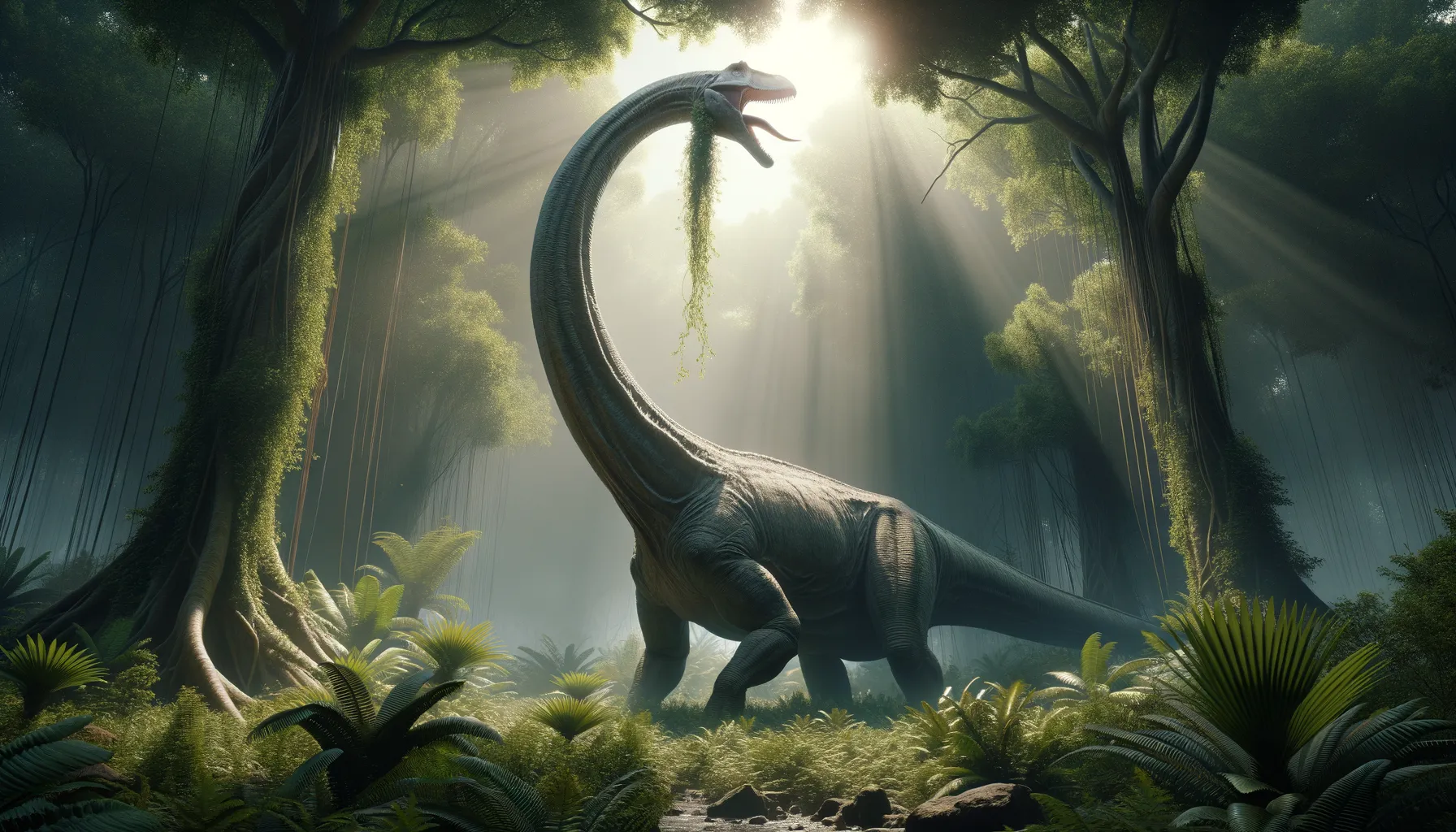
Angloposeidon
The titan of ancient England's lands.
Period
Cretaceous
Length
Stretched up to around 80 feet from head to tail.
Height
Could reach up to 15 feet tall at the shoulders.
Weight
Estimated to weigh around 20 to 30 tons.
Angloposeidon was an enormous dinosaur known for its sheer size and long neck. Its partial remains were found in the UK, suggesting it was one of the largest land animals of its time. A member of the sauropod group, it roamed the land during the Cretaceous period, likely feeding on vegetation high off the ground thanks to its height and reach.
Diet
Angloposeidon was herbivorous, feeding on large quantities of plants. Its long neck allowed it to reach high vegetation and graze from tall trees inaccessible to other dinosaurs.
Hunting
This giant didn't hunt but likely used its height and strength to reach for foliage in the forest canopy. Its sheer size would have deterred potential predators and enabled it to consume vast amounts of plant material.
Environmental challenges
Angloposeidon faced challenges like finding enough food to sustain its massive body. Droughts or environmental changes could have had serious effects on its available food sources. Predators might have targeted their young, but adult size was a formidable defensive trait.
Speed
It moved slowly due to its enormous size.
Lifespan
Potentially lived for several decades.
First discovery
First identified from a partial vertebra in England.
Fun Facts
- Angloposeidon is named after the United Kingdom and the Greek god Poseidon, combining its discovery location with a nod to its massive size.
- The fossil remains of Angloposeidon consist of a single neck vertebra, making it a mysterious giant to paleontologists.
- It is believed to have been a sauropod, a type of long-necked, plant-eating dinosaur, similar to the famous Brachiosaurus.
- Angloposeidon likely lived during the Early Cretaceous period, around 125 million years ago.
- Despite its limited fossil evidence, Angloposeidon is estimated to have been one of the largest dinosaurs that lived in what is now the UK.
- The name Angloposeidon was coined by paleontologist Dr. Darren Naish.
- The size and lack of complete fossils means much of Angloposeidon's life and appearance are still speculative among scientists.
Growth and Development
Its growth to adulthood involved rapid early growth to escape predation. Young Angloposeidon likely stayed close to adults for protection as they grew. As they matured, their slow growth stage reached gargantuan proportions necessary for survival.
Habitat
Lived in varied environments, including floodplains and forests rich in vegetation. It may have migrated seasonally to follow food supply. Water sources were crucial for this large animal, finding habitats near rivers or lakes.
Interaction with other species
Angloposeidon shared its environment with smaller herbivores and possibly competing sauropods. Predators would have been limited by the size of adult Angloposeidon to risk confrontation. Smaller dinosaurs and other creatures might have benefited from the plant life it cleared.
Natural lifespan
May have lived 70-100 years if reaching full size.
Reproduction
Likely laid eggs in nests through communal or hidden site selection. Juveniles were significantly smaller, relying on energy-dense plant material for growth. Parental care might not have been extensive post-hatching.
Social behaviour
May have lived in herds, providing safety in numbers. Social structures involved group interactions for migrating or feeding. The herd dynamics perhaps varied based on environmental conditions and threats encountered.
Fossil locations
Fossils were found in the UK, specifically within England. Due to limited finds, the full geographic range remains speculative. More discoveries in the area could expand known habitats and distribution.
